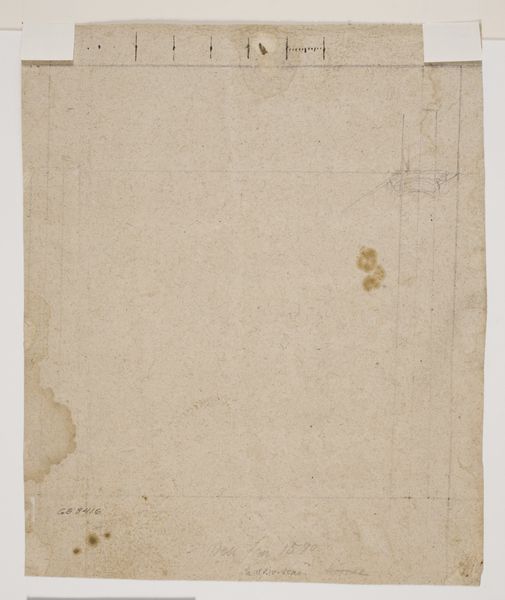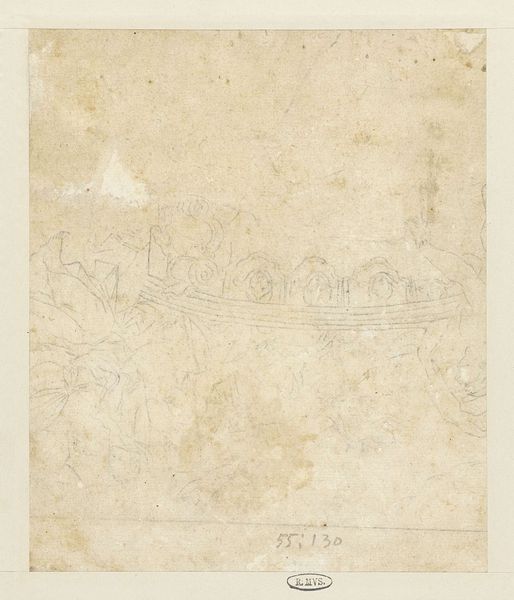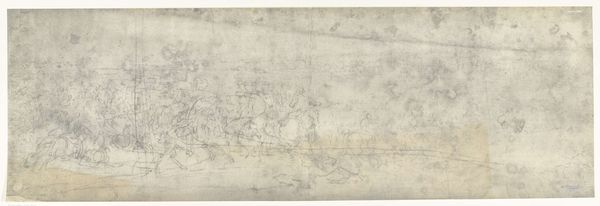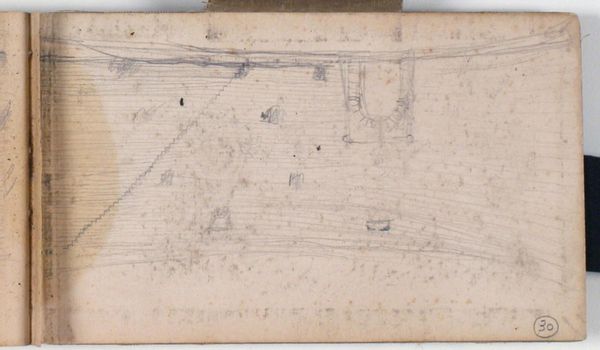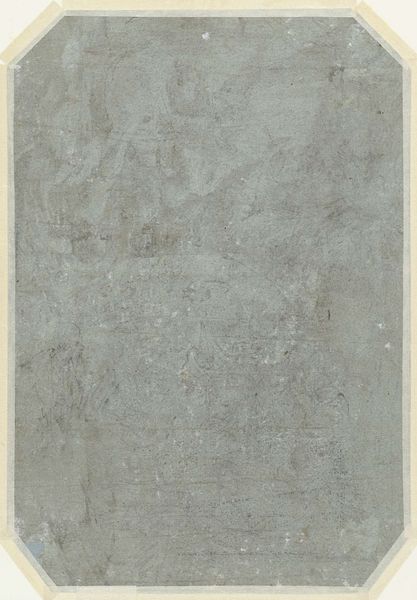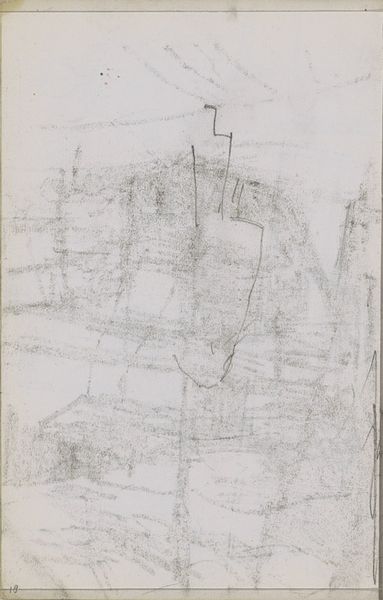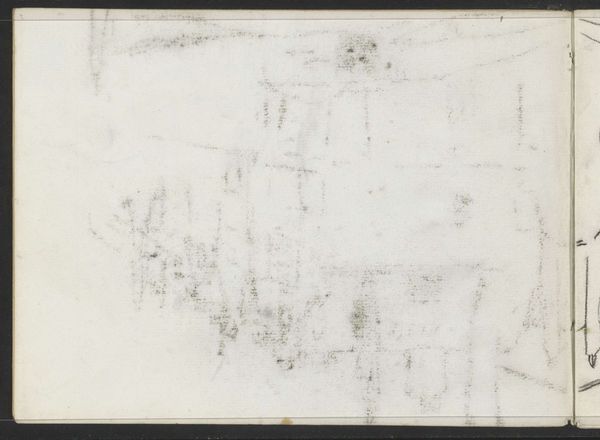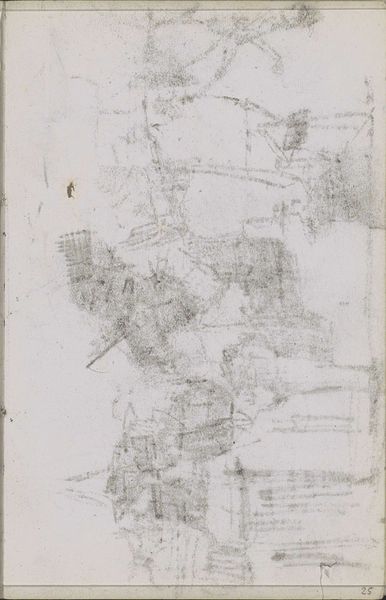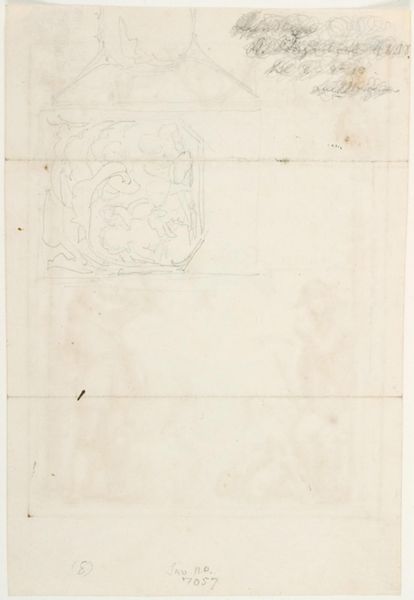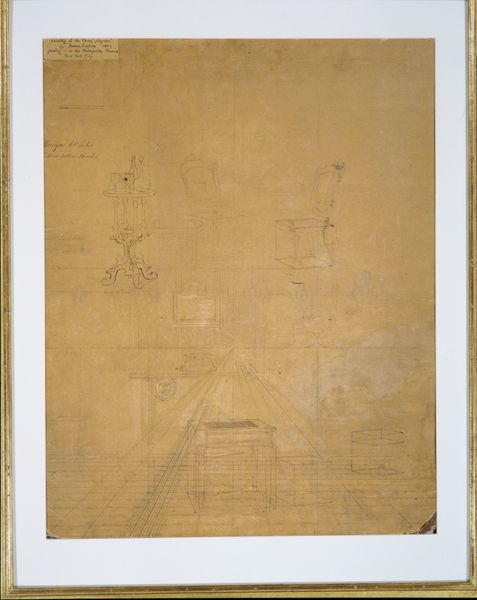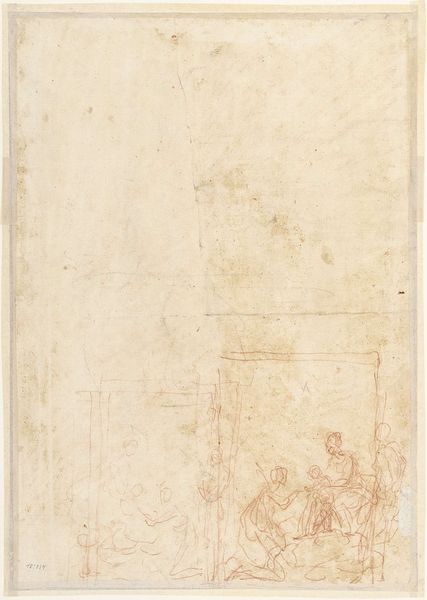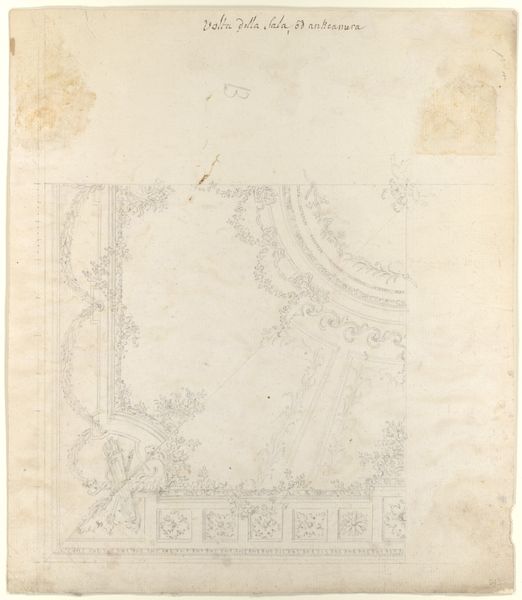
drawing, print, paper, pencil, architecture
#
drawing
#
baroque
# print
#
paper
#
geometric
#
pencil
#
mixed media
#
architecture
Dimensions: 292 × 207 mm
Copyright: Public Domain
Editor: So, this is Canaletto's "Architectural Sketches," created sometime between 1740 and 1750, using pencil and paper. It's quite faded, almost ghostly, with these geometric lines hinting at grand structures. What do you see in this seemingly preliminary work, especially regarding its role beyond just being a drawing? Curator: These aren't just sketches; they're cultural documents reflecting the social aspirations embedded within the Baroque architectural revival. The drawing's purpose wasn't merely preparatory. Consider how the display of architectural drawings, even unfinished ones, served to project power and cultivate civic pride in 18th-century Venice. Did these designs represent realizable projects or idealized visions, and how did that impact their reception? Editor: That's fascinating! So even a sketch functions as a public statement? Did Canaletto deliberately create them with this potential viewing audience in mind? Curator: Precisely. Think about the art market and patronage of the time. Canaletto likely understood his audience – wealthy merchants and nobles eager to showcase their city’s magnificence. The drawing becomes a tool of persuasion, almost a form of visual propaganda, solidifying his position within the Venetian artistic and social hierarchy. It begs the question: who controlled the visual narrative of Venice, and whose interests did it serve? Editor: I never considered the drawing as a promotional tool for the architect and city. This gives the faded lines so much more power and depth. Curator: Indeed. And by recognizing that power, we gain insight into how images, even seemingly innocuous architectural sketches, participated in shaping social and political realities. What began as architectural visualization had cultural consequences. Editor: That's truly insightful. It shifts the way I'll approach sketches and studies from now on. Curator: It highlights how art history involves questioning the purpose and effect of visual artifacts within their specific cultural context, rather than just assessing aesthetic qualities.
Comments
No comments
Be the first to comment and join the conversation on the ultimate creative platform.
